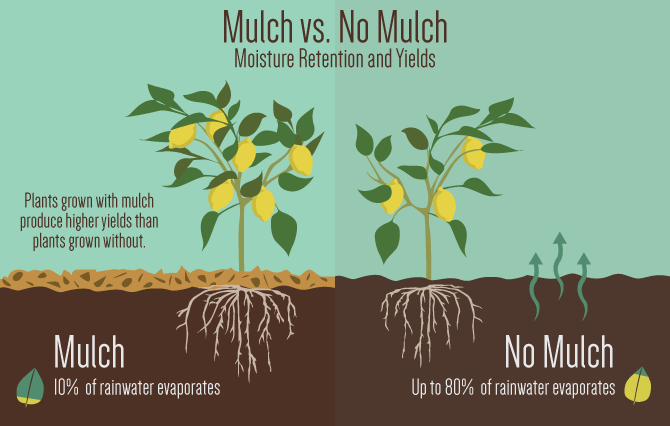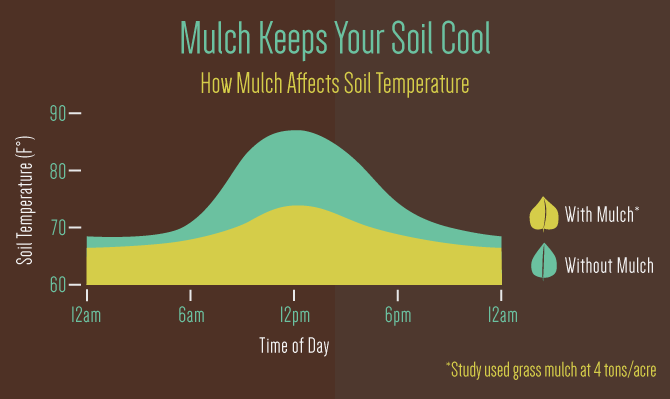Does pH hold the key to preventing cancer? Some say cancer cells can not thrive in an alkaline environment.
While most of us now acknowledge the link between food choice and waistline, there's quite a bit more work to be done to educate the masses about how food can function as health care—or can work against us, even as a link to things like cancer.
A carcinogen is, quite simply, anything that causes cancer. Many carcinogens are not immediately toxic, making them seem less harmful than they are. Common carcinogens include things like cigarette smoke; but your food can carry whopping amounts that can wreak havoc on your health.
Cooking food at high temperatures (i.e. grilling or barbecuing) can create the formation of carcinogens comparable to cigarette smoke.The known animal carcinogen acrylamide is created in fried or overheated carbs (French fries, potato chips).
Here's a list of the top-10 foods that may contain carcinogens that can cause cancer in your body (info gleaned from
Natural Health News And Discoveries
), due to carcinogens and high acidity levels
:
Genetically-modified organisms (GMOs). It goes without saying that GMOs have no legitimate place in any cancer-free diet, especially now that both GMOs and the chemicals used to grow them have been shown to cause rapid tumor growth. But GMOs are everywhere, including in most food derivatives made from conventional corn, soybeans, and canola. Avoid them by sticking with certified organic, certified non-GMO verified, and locally grown foods that are produced naturally without biotechnology
Processed meats. Most processed meat products, including lunch meats, bacon, sausage, and hot dogs, contain chemical preservatives that make them appear fresh and appealing, but that can also cause cancer. Sodium nitrite and nitrate have been linked to significantly increasing the risk of colon and other forms of cancer. Choose only uncured meat products made without nitrates, and preferably from grass-fed sources.
Microwave popcorn. Bags of microwave popcorn are lined with chemicals linked to causing infertility and liver, testicular, and pancreatic cancers. The EPA recognizes the perfluorooctanoic acid (PFOA) in microwave popcorn bag linings as “likely” carcinogenic, and several independent studies have linked the chemical to causing tumors. Too, the diacetyl chemical used in the popcorn itself is linked to causing lung damage and cancer.
Soda pop. Like processed meats, soda pop has been shown to cause cancer. Loaded with sugar, food chemicals and colorings, soda acidifies the body and literally feeds cancer cells. Common soda pop chemicals like caramel color and its derivative 4-methylimidazole (4-MI) have also specifically been linked to causing cancer.
‘Diet’ foods, beverages. Even worse than conventional sugar-sweetened soda pop, though, is “diet” soda pop and various other diet beverages and foods. A recent scientific review issued by the European Food Safety Authority (EFSA) of more than 20 separate research studies found that aspartame, one of the most common artificial sweeteners, causes a range of illnesses including birth defects and cancer. Sucralose (Splenda), saccharin and various other artificial sweeteners have also been linked to causing cancer
Refined ‘white’ flours. Refined flour is a common ingredient in processed foods, but its excess carbohydrate content is a serious cause for concern. A study published in the journal Cancer Epidemiology, Mile Markers, and Prevention found that regular consumption of refined carbohydrates was linked to a 220 percent increase in breast cancer among women. High-glycemic foods in general have also been shown to rapidly raise blood sugar levels in the body, which directly feeds cancer cell growth and spread.
Refined sugars. The same goes for refined sugars, which tend to rapidly spike insulin levels and feed the growth of cancer cells. Fructose-rich sweeteners like high-fructose corn syrup (HFCS) are particularly offensive, ascancer cells have been shown to quickly and easily metabolize them in order to proliferate. And since cookies, cakes, pies, sodas, juices, sauces, cereals, and many other popular, mostly processed, food items are loaded with HFCS and other refined sugars, this helps explain why cancer rates are on the rise these days
Conventional apples, grapes, and other ‘dirty’ fruits. Many people think they are eating healthy when they buy apples, grapes or strawberries from the store. But unless these fruits are organic or verified to be pesticide-free, they could be a major cancer risk. The Environmental Working Group (EWG) found that up to 98 percent of all conventional produce, and particularly the type found on its “dirty” fruits list, is contaminated with cancer-causing pesticides
Farmed salmon. Farmed salmon is another high-risk cancer food. Farmed salmon not only lacks vitamin D, but it is often contaminated with carcinogenic chemicals, PCBs, flame retardants, pesticides and antibiotics,
Hydrogenated oils. They are commonly used to preserve processed foods and keep them shelf-stable. But hydrogenated oils alter the structure and flexibility of cell membranes throughout the body, which can lead to a host of debilitating diseases such as cancer. Some manufacturers are phasing out the use of hydrogenated oils and replacing them with palm oil and other safer alternatives, but trans fats are still widely used in processed foods.
Here's some more food for thought:
Cancer thrives in an acidic environment and cannot survive in an alkaline environment.
Cancer cells make your body even more acidic as they produce lactic acid. So if you have cancer, your pH levels are low and your body is too acidic.
Taking action to make your body more alkaline is vital in the battle against cancer.
Unfortunately, the majority of food and drinks we consume are acidic, such as meat, grains and sugar, with colas and other soft drinks being highly acidic. So unless you have been eating a very healthy diet, full of fresh fruit and vegetables, chances are good your body is too acidic, providing the perfect environment for cancer to grow.
Actually, too much acidity is an underlying factor in many degenerative diseases -- diabetes, arthritis, fibromyalgia and more. A basic maxim of natural physicians is: Balance the biological terrain. Do this first, then everything can come back to normal. There is a long history of reversing cancer simply by alkalinizing the body. It is one of the basic strategies in the battle against cancer and for improving your health in general.
In order for our bodies to maintain the best living environment,
the optimal level is close to 7.4
. This is at a slightly alkalizing state. Although, 7.36 to 7.44 is also an acceptable range
Virtually
everyone
with cancer has low pH levels. Low pH causes your body to store more toxins in cells, and reduces oxygen levels, both of which are fundamental to the development of cancer. When cancer cells grow, they produce even more acid, making it very difficult to raise pH levels.
When you take supplementation to increase pH levels, your cells notice the difference and start to dump some of the toxins they are holding back into the bloodstream now that they have a chance to get rid of them. Because the cells are releasing these stored toxins, your pH levels drop again. This detoxification process can take months to get through.
In addition, because cancer cells pump out lactic acid as a byproduct of their energy production, they create even more acidity. It can take a long time to normalize pH because of these factors, but, as you do, you can make your body, in a sense, "cancer proof".
Here's a cheat sheet of foods that increase the alkalinity in your body (list compiled from
Dr. Oz
,
Natural News
and
Health Extremist
):
Root vegetables—Due to the healing "yang" nature of these foods in traditional Chinese medicine, and their tendency to be more rich in minerals than many other vegetables, it may be safe to say that you can't get enough of them. Look for radishes especially (black, red or white), as well as beets, carrots, turnips, horseradish and rutabaga.
Olive Oil
Cruciferous vegetables—broccoli, cabbage, cauliflower, Brussels sprouts
Leafy greens—kale, Swiss chard, turnip greens and spinach - of which spinach may in fact be the best pick. Known especially for its rich vitamin K and folate content, spinach is also packed with vitamins, minerals, phytochemicals, antioxidants and fiber, helping to improve digestion and even vision.
Garlic—A true miracle food, garlic appears at the top of innumerable lists of foods that encourage overall health, and alkaline-forming food is no exception. Among its other benefits are its ability to promote cardiovascular and immune health by lowering blood pressure, cleansing the liver and fighting off disease.
Cayenne peppers (capsicum)—With enzymes essential to endocrine function, cayenne is among the most alkalizing foods. It is known for its antibacterial properties and is a rich supply of vitamin A, making it a helpful agent in fighting off the harmful free radicals that lead to stress and illness.
Raisins
Watermelon
Avocado—These are also at the top of the list of alkalizing foods. Avocados contain high amounts of essential vitamins, fatty acids, and amino acids.
Red wine
Celery
Lemons—Lemons may be the most alkalizing food of all. As a natural disinfectant, it can heal wounds while also providing potent and immediate relief for hyperacidity and virus-related conditions, as well as coughs, colds, flu and heartburn. Lemon also works to energize the liver and promote detoxification.Try starting your day with a warm glass of water and lemon.
Bananas
Cancer thrives in an
acidic environment
and cannot survive in an alkaline environment. Cancer cells make your body even more acidic as they produce lactic acid. So if you have cancer, your pH levels are low and your body is too acidic.
Taking action to make your body more alkaline is vital in the battle against cancer.
Unfortunately...
The majority of food and drinks we consume are
acidic
, such as meat, grains and sugar, with colas and other soft drinks being highly acidic. So unless you have been eating a very healthy diet, full of fresh fruit and vegetables, chances are good your body is too acidic, providing the perfect environment for cancer to grow.
Actually, too much acidity is an underlying factor in many degenerative diseases -- diabetes, arthritis, fibromyalgia and more. A basic maxim of natural physicians is: Balance the biological terrain. Do this first, then everything can come back to normal.
- See more at: http://www.cancerfightingstrategies.com/ph-and-cancer.html#sthash.qcbH7hSf.dpuf
































































